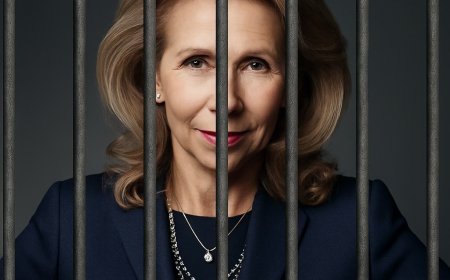Inside Norway’s Big Hydropower Plans

Norway has major plans to expand its hydropower capacity through expansion projects and new developments. The Scandinavian country, which is well-known for its strong and diverse energy sector, recently announced plans to collaborate with the United States Department of Energy (DoE) to support research and development into hydropower in the two countries. In addition, Norway aims to ramp up its hydropower production in the coming years to supply clean power as the domestic energy demand continues to rise.
In July, the DoE said that it had extended its collaboration with the Norwegian Ministry of Energy on hydropower research and development, building on an existing memorandum of understanding between the two powers. Norway and the U.S. will share key information, tools, and technologies related to marine energy and new hydropower solutions. The partnership is expected to help reduce energy costs and strengthen grid reliability and security.
U.S. Energy Secretary Chris Wright stated, “Strong partnerships drive innovation, and innovation strengthens America’s energy future… Hydropower is a tremendous resource - one that supports reliable, affordable power across the country and holds vast potential to bolster America’s grid.” Wright added, “By signing this Memorandum of Understanding with Norway, we are building upon our two nations' shared expertise and advanced marine energy technologies.”
Norway has invested heavily in its hydropower sector in recent years, in research and development, as well as plant expansions and new developments. In 2023, hydropower contributed 89 percent of Norway’s power generation, followed by wind power at 9 percent, according to the International Energy Agency. In May, Norway was named the second most energy-resilient country in the world, after Iceland, by TRG Datacenters, thanks to its strong hydropower sector and diverse energy mix.
In February, the Norwegian parliament voted to open up protected rivers to hydropower plants, which spurred significant opposition from environmental groups concerned about wildlife and ecosystems. The bill permits the construction of hydropower plants larger than 1 MW in protected waterways if the societal benefit is “significant” and the environmental consequences are deemed “acceptable”. Norway has almost 400 protected waterways. Some groups have accused the government of rushing the bill through parliament without conducting adequate public consultation or environmental impact assessments.
In April, SEB Nordic Energy’s portfolio company Locus Energy acquired a 158 GWh hydropower portfolio consisting of operational assets and assets under construction. This will bring Locus’s hydropower assets to 410 GWh per year in total once completely operational.
Richard Gavel, the Portfolio Manager at SEB Nordic Energy, stated, “The addition of reliable hydropower generation reinforces Locus Energy’s long-term strategy with a solid cash flow profile.” Gavel added, “By expanding strategically within the Nordics and leveraging synergies across technologies and geographies, the company is building a scalable, resilient platform with long-term value potential. We are excited to support the next growth phase.”
In May, the Norwegian state-owned utility Statkraft submitted a license application to upgrade its hydropower plants on the Numedalslågen river in Buskerud at a projected cost of $390 million. Statkraft aims to increase electricity production and reduce consumer utility bills. The firm’s Nore I plant has been operational since 1928, and its Nore II plant began operations in 1946. It expects to commence work on five major upgrades by 2030 if the licenses are approved.
Statkraft must decide between two options for the upgrade. The firm hopes to merge the existing two plants into a single new facility constructed inside the mountain, to increase capacity from 274MW to 500MW and raise annual production from around 1,500 GWh to 1,700GWh. Alternatively, Statkraft could move the two plants into the mountain independently, which would boost capacity by 65 MW and annual production by around 150 GWh.
Statkraft also applied for a license for the expansion of its Mauranger hydropower plant in western Norway from 250 MW to 880 MW in 2022. And, in May this year, the firm applied for a license to construct a $590 million hydropower plant in Sunndal. If approved, the new Aura facility will be constructed deep in a mountain to replace two existing stations – Aura and Osbu. This would also be one of Statkraft’s largest hydropower investments in decades.
The CEO of Statkraft, Birgitte Ringstad Vartdal, stated, “Electricity is the backbone of our society and the foundation for value creation across the country. Many hydropower plants now require modernisation.” Vartdal added, “At the same time, growing demand and increased production from intermittent energy sources mean we need to be able to generate more electricity exactly when it is needed. By building a new Aura power plant, we can deliver more capacity and slightly more energy without adding more water. That’s what the future renewable energy system needs.”
Norway plans to continue investing heavily in hydropower in the coming years to support the country’s growing electricity demand, as well as cross-border power sharing efforts. It will collaborate with the U.S. on research and development to drive down production costs and improve technology. In addition, it plans to significantly expand existing plants as well as encourage the development of new facilities across the country.
By Felicity Bradstock for Oilprice.com









































